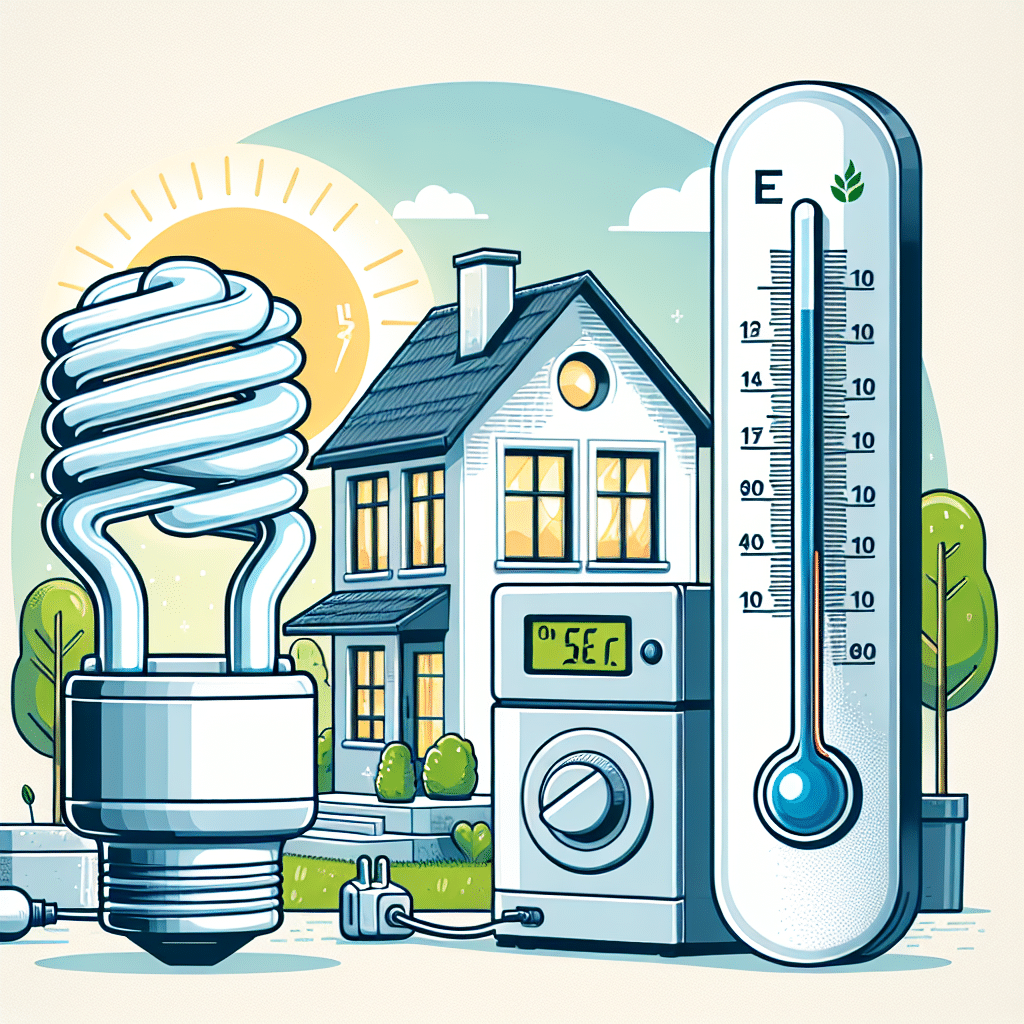Cost-Saving Energy Tips for Apartments
1. Utilize Energy-Efficient Appliances
When it’s time to replace old appliances, consider those that are ENERGY STAR® certified. These appliances use up to 50% less energy. Focus on refrigerators, dishwashers, and washing machines. Although the initial investment may be higher, the long-term savings on your energy bills can be substantial.
2. Seal Up Drafts
Drafts can contribute significantly to energy loss in an apartment. Walk around your space and check windows and doors for gaps. Use weather-stripping or caulk to seal these openings. This simple step can prevent heated or cooled air from escaping, thereby reducing reliance on your heating and cooling systems.
3. Optimize Your Thermostat
Invest in a programmable thermostat to help regulate temperature based on your schedule. Adjust your heating or cooling settings by several degrees when you’re out. According to the U.S. Department of Energy, lowering your thermostat by just 7 to 10 degrees for eight hours a day can save you around 10% a year on heating costs.
4. Switch to LED Lighting
Replace incandescent bulbs with LED lighting. LEDs consume up to 75% less energy and have a lifespan that’s 25 times longer. Consider using dimmer switches and timers for additional control over your lighting, maximizing energy savings without compromising on brightness when you need it.
5. Utilize Natural Light
Maximize natural light to illuminate your apartment during the day. Keep curtains open and strategically place mirrors to reflect light throughout your space. This practice not only saves energy but also enhances your mood and reduces reliance on artificial lighting.
6. Unplug Unused Electronics
Many electronics continue to draw power even when turned off, a phenomenon known as phantom load. Unplug devices such as chargers, gaming consoles, and kitchen appliances when not in use. Alternatively, use power strips and turn them off when you’re done, helping to eliminate these unnecessary energy expenses.
7. Insulate Your Apartment
While retrofitting insulation in an apartment may not be feasible, you can still make improvements. Use insulated curtains or thermal shades to keep your home warm in winter and cool in summer. Also, consider draft stoppers for doors to prevent cold from entering or warm air from escaping.
8. Limit Hot Water Use
Water heating can account for a sizable chunk of your energy bill. Take shorter showers, fix leaking faucets, and wash clothes in cold water when possible. Investing in a low-flow showerhead can also help reduce water usage without sacrificing pressure.
9. Optimize Your Ventilation
Proper ventilation helps maintain air quality without overburdening your HVAC system. Use exhaust fans in bathrooms and kitchens to remove excess humidity and odors efficiently. Regularly clean these fans to ensure they function effectively without consuming extra energy.
10. Schedule Regular Maintenance
Keep your heating and cooling systems well-maintained. Schedule an annual inspection by a qualified professional to clean and adjust the systems. A well-maintained HVAC is more energy-efficient and can help extend its lifespan.
11. Choose Energy-Efficient Windows
If you’re considering window treatments, look for double-pane or low-E glass options when possible. These windows significantly reduce energy loss compared to single-pane options. If replacement isn’t an option, use window films or insulating shades to minimize heat transfer.
12. Take Advantage of Off-Peak Hours
Some utility companies offer lower rates during off-peak hours. Use large appliances like dishwashers and laundry machines during these times to cut down costs. Research your local utility rates to know when it’s cheaper to run these appliances.
13. Smart Home Devices
Integrate smart home technology to monitor and control energy usage. Smart plugs and energy monitors can help track consumption, while smart thermostats adapt based on your daily habits, ensuring efficient energy use tailored to your lifestyle.
14. Cook Smartly
Make your cooking habits energy-efficient. Use a microwave or slow cooker instead of an oven when possible, as they consume less energy. Also, keep lids on pots to reduce cooking time, which further saves energy.
15. Plan for Seasonal Changes
Seasonal changes affect energy demands. In winter, focus on layering clothes rather than cranking up the heat. In summer, utilize ceiling fans to circulate air instead of relying solely on air conditioners. Set your fans to rotate counter-clockwise for cooler air distribution.
16. Save Energy with Smart Power Strips
Smart power strips automatically cut off power to devices that go into standby mode. This prevents phantom load and can save you money over time. Look for advanced models that allow you to manage devices remotely.
17. Join Energy-Saving Programs
Many utility companies offer energy-saving programs that provide rebates or discounts for implementing energy-efficient measures. Research local initiatives in your area to take advantage of savings opportunities.
18. For Outdoor Spaces
If you have access to outdoor spaces, consider energy-efficient outdoor lighting or solar-powered lights. Similarly, using natural shade from trees rather than mechanical cooling can help moderate the apartment’s temperature in warmer months.
19. Limit Energy Usage During Peak Times
Try to limit energy consumption during peak usage hours, typically late afternoon to early evening. Adjust schedules to perform heavy tasks, such as laundry or using the dishwasher, during off-peak times to alleviate demand on the grid and save money.
20. Consider Roommates
If feasible, consider sharing your apartment with a roommate. Splitting rent and utility costs can significantly reduce your overall expenses, allowing for greater flexibility in managing energy usage.
SEO Best Practices
Incorporate keywords relevant to your audience, such as “energy-saving tips for apartments,” “ways to lower utility bills,” and “energy-efficient apartment solutions.” Use subheadings and bullet points for readability, ensuring that the content is well-organized for both search engines and human readers. To enhance engagement, include relevant resources for further reading and actionable links.
